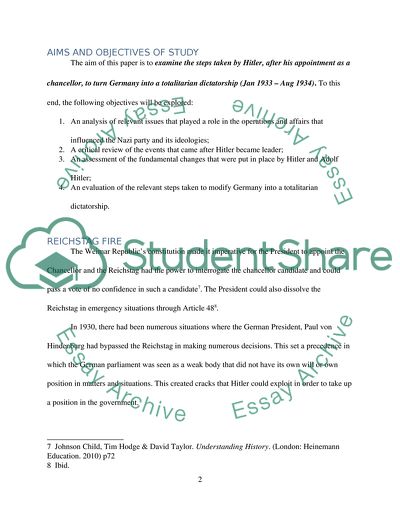Cite this document
(“Growth and Expansion of the Nazi Party 1933 - 1934 Essay”, n.d.)
Growth and Expansion of the Nazi Party 1933 - 1934 Essay. Retrieved from https://studentshare.org/history/1816348-examine-the-steps-taken-by-hitler-after-his-appointment-as-a-chancellor-to-turn-germany-into-a-totalitarian-dictatorship-jan-1933-aug-1934
Growth and Expansion of the Nazi Party 1933 - 1934 Essay. Retrieved from https://studentshare.org/history/1816348-examine-the-steps-taken-by-hitler-after-his-appointment-as-a-chancellor-to-turn-germany-into-a-totalitarian-dictatorship-jan-1933-aug-1934
(Growth and Expansion of the Nazi Party 1933 - 1934 Essay)
Growth and Expansion of the Nazi Party 1933 - 1934 Essay. https://studentshare.org/history/1816348-examine-the-steps-taken-by-hitler-after-his-appointment-as-a-chancellor-to-turn-germany-into-a-totalitarian-dictatorship-jan-1933-aug-1934.
Growth and Expansion of the Nazi Party 1933 - 1934 Essay. https://studentshare.org/history/1816348-examine-the-steps-taken-by-hitler-after-his-appointment-as-a-chancellor-to-turn-germany-into-a-totalitarian-dictatorship-jan-1933-aug-1934.
“Growth and Expansion of the Nazi Party 1933 - 1934 Essay”, n.d. https://studentshare.org/history/1816348-examine-the-steps-taken-by-hitler-after-his-appointment-as-a-chancellor-to-turn-germany-into-a-totalitarian-dictatorship-jan-1933-aug-1934.


